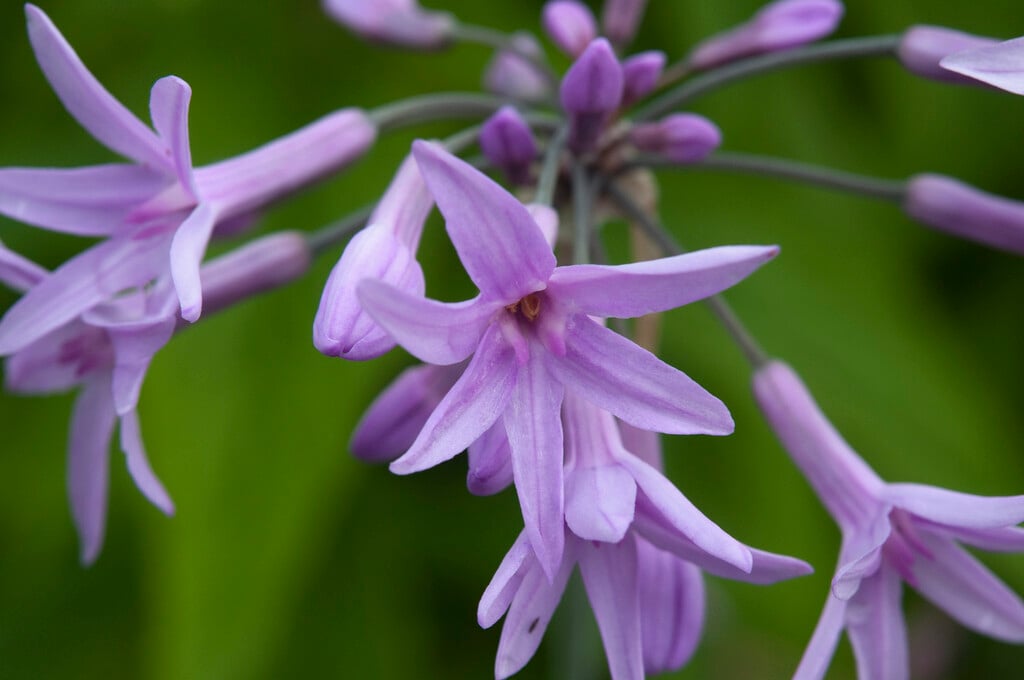Not the plant you're looking for? Search over 300,000 plants
Bulbs
Size
Ultimate height
0.1–0.5 metresTime to ultimate height
2–5 yearsUltimate spread
0.1–0.5 metresGrowing conditions
Loam
Sand
Moisture
Well–drainedpH
Acid, Alkaline, NeutralColour & scent
| Stem | Flower | Foliage | Fruit | |
| Spring | Grey Silver Green | |||
|---|---|---|---|---|
| Summer | Purple | Grey Silver Green | ||
| Autumn | Purple | Grey Silver Green | ||
| Winter |
Position
- Full sun
Aspect
East–facing or South–facing or West–facing
Exposure
Sheltered Hardiness
H3Botanical details
- Family
- Amaryllidaceae
- Native to GB / Ireland
- No
- Foliage
- Deciduous
- Habit
- Tufted
- Genus
Tulbaghia are bulbous or rhizomatous perennials with linear, onion-scented leaves and umbels of small, star-shaped flowers with a small cup-like corona
- Name status
Correct
- Plant range
- South Africa
How to grow
Cultivation
Grows well in any moderately fertile, well-drained, loamy soil. Protect in all but the mildest areas over winter with a deep dry mulch or bring container grown plants into an unheated greenhouse
Propagation
Propagate by seed, sown when ripe, in containers in a cold frame or division in spring
Suggested planting locations and garden types
- Mediterranean climate plants
- City and courtyard gardens
- Cottage and informal garden
- Rock garden
- Flower borders and beds
Pruning
No pruning required
Pests
Generally pest-free
Diseases
Generally disease-free
Get involved
The Royal Horticultural Society is the UK’s leading gardening charity. We aim to enrich everyone’s life through plants, and make the UK a greener and more beautiful place.
